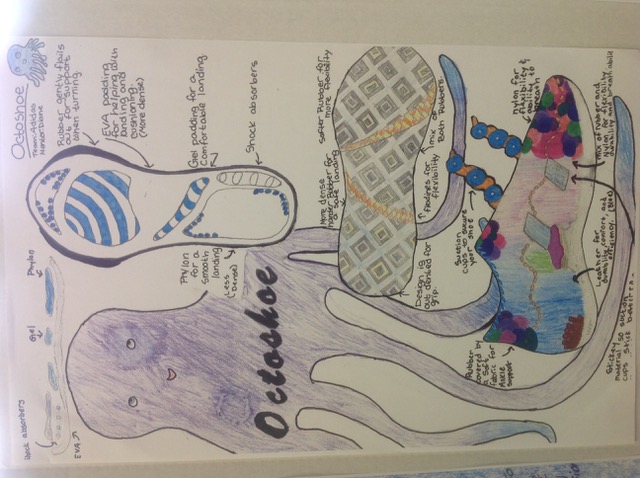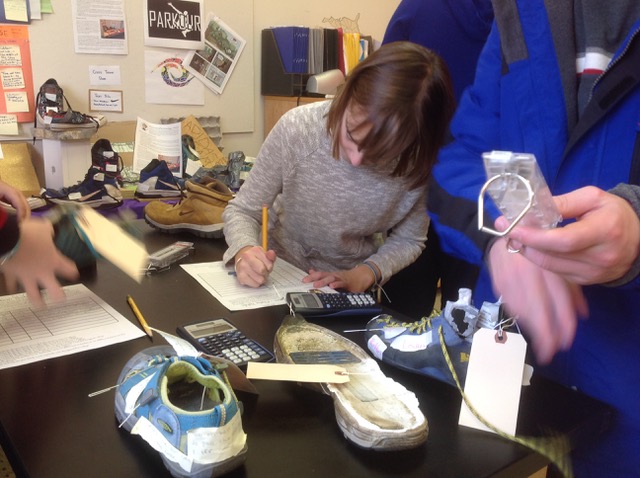How It's Done: Enrichment - It’s Good for the Sole
The challenge took students through an online environment of the sport; set up with milestones and labs to uncover information needed to create deliverables.

One Massachusetts middle school teacher challenged her students to use their creativity, and some tech, to design the perfect parkour shoe.
Who: Diane Hichborn, Middle School Teacher—Math, Science, Humanities
Where: Sparhawk Middle School— Amesbury, MA
What: Parkour and the Octoshoe, a Sucker for PBL Enrichment
One fall recess I observed a few students tumbling on the ground, jumping off of boxes and projecting off walls. When returning to class, they asked if we could have a Parkour Enrichment. Enrichments are six-week-long courses that provide learning experiences outside the regular curriculum. They are derived from traditional academic domains, the art and kinesthetic realms or practical life-skills and tease out an array of interests in our students. I looked into what it takes to build a course for that type of activity. It must have been meant to be! When I opened my email, there was an invitation from TERC—a non-profit group made up of math and science education and research experts— announcing the Data Arcade Sportslab Parkour Shoe Design Challenge.

The challenge took students through an online environment of the sport; set up with milestones and labs to uncover information needed to create deliverables. During some labs, students tested the coefficient of friction on sneaker outsoles and how the force of jumping affected the design of the midsole. Teams worked together to build models of sneakers that enhanced the shoelace-tying experience. The winning design, Octoshoe, used bio-mimicry to do away with the laces, instead using an octopus-like strap that secured the sneaker with suction cups. Students watched and interviewed real athletes in action. They collaborated in designing the final product.

Biggest Challenge
The main obstacle I had was the time investment. Fortunately, our current science topic was Forces and Motion, so I was able to incorporate the challenge into our curriculum. The final project was to include a business card including a team logo, a presentation board showing the anatomy of the sneaker’s features, and a sales pitch.Together, the students and I learned how designers illustrated the marketability of their shoes and techniques of preparing computer-aided presentations.
Tools and ideas to transform education. Sign up below.

Positive Results
The competition was rewarding in itself. Students enjoyed critiquing other teams’ designs and said that they will never look at a sneaker the same way. They learned that it was not about the competition, but all that they had achieved along the journey. (Sparkhawk teams took two of the top three awards in the Challenge.)
Pro Tips
Patience and the ability to listen to each student’s ideas are key. I like sharing my ideas and knowledge with them so that they can learn and become more confident in their own abilities. I believe it is important to differentiate the curriculum to suit student’s abilities and then watch the range of possible outcomes. In the end, I reflect on the task, not only as a learning experience for the student, but also for myself.
Finding Funding
There was no cost as it was part of a grant that TERC received from the National Science Foundation (NSF).
Tech Tools
- Laptops
- Google search
- Spring scales and weights (to test for tread traction, finding the coefficient of friction)
- Recycled/upcycled materials
- 3D Sketch-up Design
- Architectural Tools
- Excel
Sascha has nearly two decades of experience as a freelance journalist writing for national magazines, including The Washington Post, LA Times, Christian Science Monitor, National Geographic Traveler, and others. She writes about education, travel and culinary topics.

